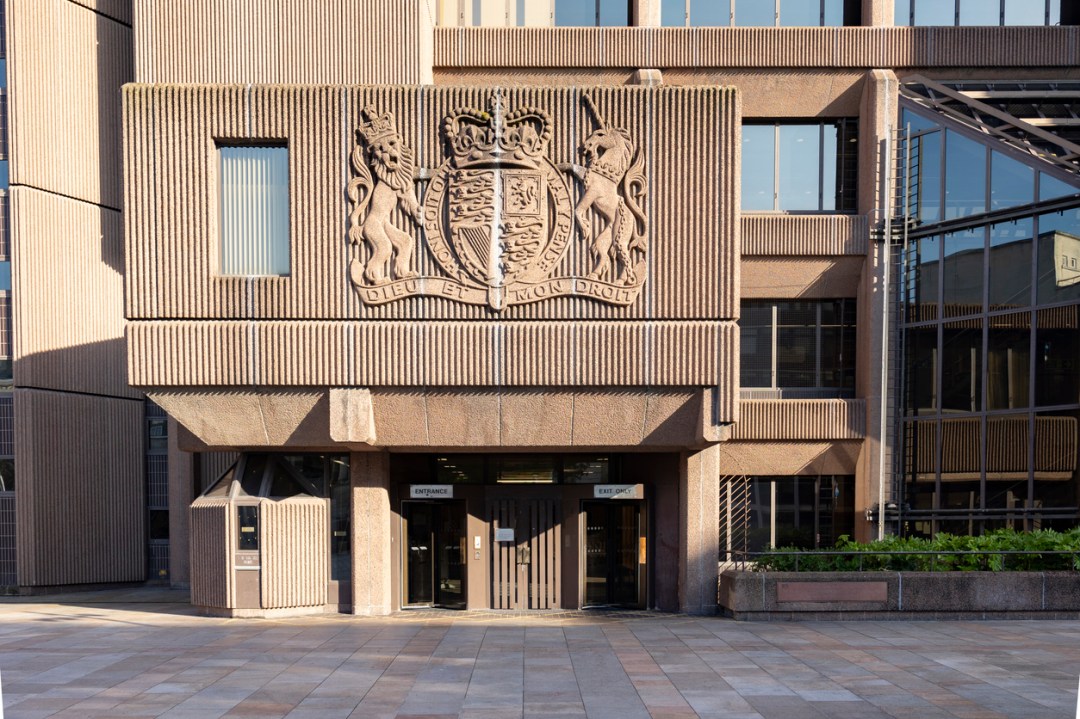When the Ministry of Justice announced that the government would introduce emergency legislation this week to stop ‘two tier’ Sentencing Council guidelines being implemented, the Lord Chancellor may have hoped that her swift action would bring this story to a close. But today the debate over ‘two-tier’ justice has widened, with the Telegraph reporting this morning that ‘ethnic minority criminals are being given priority by judges considering bail under new two-tier justice guidelines drawn up by the Ministry of Justice.’
When someone has been is charged with a crime they are either held on remand, in a prison, or are bailed. When on bail conditions apply. After I was charged with fraud in October 2018, I was on bail until being sentenced in February 2020. During that time I wasn’t allowed to leave the country and had to reside at a particular address. The right to bail is defined under the 1976 Bail Act, under which the presumption is that bail should be granted, unless the defendant is likely to try to avoid justice, commit further offences or try to interfere with witnesses.
We do know that magistrates’ courts seem to disproportionately remand non-white defendants. According to government data, 19 per cent of white defendants at magistrates’ courts are remanded, as opposed to 25 per cent of black defendants, and 24 per cent of Asian defendants. From my experience at Westminster Magistrates in 2018 it’s easy to see why. Two pleasant, middle-class, middle-aged white women were considering whether to remand or bail me. My planned holiday to Egypt was of particular concern. They ended up asking me to promise to come back from holiday and then hand my passport in, but otherwise were happy to keep me on bail. I wasn’t aware of any advice being provided to them by a bail information officer. Could such judgments be informed by bias? It certainly seems plausible.
At crown courts the picture is quite different. While 48 per cent of white, and 49 per cent of Asian defendants receive bail, only 41 per cent of black defendants do. What’s driving this? It seems we don’t really know – there’s a shortage of good research on why bail is or isn’t granted.
The latest complaints are about the ‘Probation Court Services Policy Framework’, issued on 6 January this year. The document defines how probation staff working in court must act, with a section dedicated to the ‘Bail Information Service’ (BIS). This service provides courts with ‘relevant factual information’ which might help judges or magistrates. In instructs them to ‘identify and prioritise’ certain defendants, including those who have ‘mental health conditions and learning disabilities’, young adults, women, ‘defendants from ethnic minorities’ and ‘transgender defendants’. Prioritising doesn’t necessarily mean that person will avoid remand. The judges and magistrates decide, not probation staff. But it does mean that if resources are scarce they will be directed at those particular groups. I asked the Ministry of Justice to confirm exactly what the impact of this prioritisation is but they have not yet responded.
The aim, as with the Sentencing Guidelines, is supposedly to eliminate disparities in the system. Are young people, those with learnings disabilities, women and transgender defendants being remanded more than white men aged over 25? Certainly women are not. While 43 per cent of men are bailed at the crown courts, 67 per cent of women avoid remand. I couldn’t find reliable data for transgender defendants, those with learning disabilities or young adults. That being said my personal experience with a cellmate in Wandsworth showed me the court system is often bad at spotting the truly vulnerable.
The impression is that there’s a standard list of vulnerable people which is being added to these policy documents despite a lack of evidence. We haven’t any idea if trans defendants are more likely to be remanded, but they’re in the policy document. We do know that black defendants are much less likely to receive bail than their white or Asian counterparts. We know that white defendants are slightly more likely to be remanded at the crown court than Asians. We know that women are much more likely to be bailed than men. But the rules seem to fail on their own terms, not even reflecting the known disparities. If they did we would probably target interventions specifically at the magistrates, and at black men.
These rules also ignore characteristics like having been in care, or class, which are far more likely to lead to disproportionate outcomes. A quarter of prisoners have been in care, when only around 1 per cent of the population have been. A system which was really concerned with fairness would be prioritising them.
At the weekend the Lord Chancellor made it clear that she understands the risks, that ‘the appearance of differential treatment before the law is particularly corrosive’. She’s right. The impression is that the state has identified a set of favoured groups, and is prioritising them across the justice system, whether or not it makes any sense, and whether or not there is any evidence of discrimination against them.
Bail decisions should remain grounded in the law. If a defendant can be trusted to attend their trial, is unlikely to commit further offences and won’t seek to pervert the course of justice then they should be given bail. If there is evidence of racist or biased decisions by magistrates or judges (as there may well be for black men) then these should be investigated and addressed. But the system should not seek to broadly favour whole categories of people who otherwise have little in common.








Comments